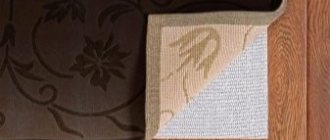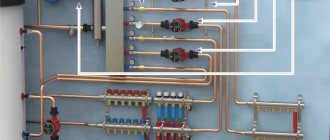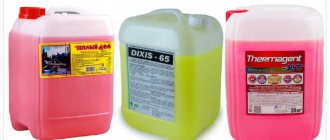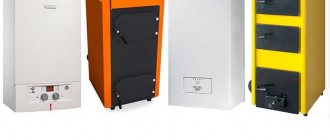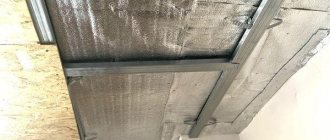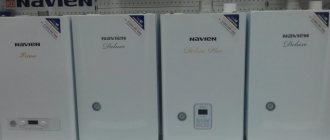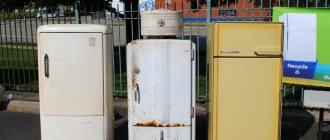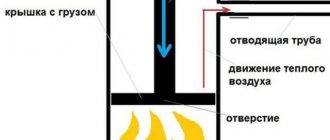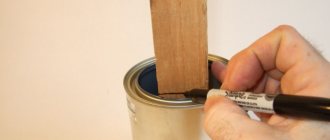We all love to soak in a hot bath. But have you ever thought about doing this in your garden while enjoying the sunset or the starry sky? But this is a great idea! This is not difficult, but it does take time as you will have to wait a few days for the foundation to harden and the plaster to dry. So, a DIY bath. Go!
Features of installation work
Based on the insulation material, the fastening method is determined. So, for example, when using polystyrene foam, you should first clean the old coating and treat it with a concrete contact primer. The glue is applied in an even layer using a notched spatula. And only then the foam is glued to the wall.
For fixation purposes, additional fasteners are used. After pasting the walls with polystyrene foam, they are puttied. The disadvantage is that ceramic tiles cannot be glued to such a surface. It is possible to give an aesthetic appearance to the surface only by painting.
When using plasterboard, mineral wool, or plastic panels as insulation, it is necessary to make lathing based on wood or a metal profile. If small cracks form during installation of the material, they are filled with foam. In this situation, you don’t have to putty. Using putty with a mesh will provide reliable protection from rodents.
Experienced craftsmen recommend gluing insulation using polyurethane foam. Practice has shown that a container designed for 0.5 liters is sufficient for this. This adhesive composition is not subject to humid environments or temperature changes. Installation must be carried out extremely carefully, adhering to safety precautions. It is better to use a gun to apply foam. It comes with nozzles of different sections. It will save 20% of foam.
Heliosa EH110/FM
The best efficiency of the device Country: Italy Average price: 10,000 rubles.
Rating (2020): 4.9 The development belongs to the type of infrared (IR) heating devices and can be installed both in bathrooms or bathhouses, and in open areas. The device has a classic design for this type and is light in weight (2 kg). Its most important advantage is its high water protection class IP23.
Another important feature is cost-effectiveness. The device can be used for zonal heating of a room area, in particular, a bath sector or a place for drying clothes. In addition, heated objects retain heat for a long time, gradually saturating the air with it. The presence of a special stainless steel grill in the design protects against burns. Among the advantages of the model, owners highlight the durability of the lamps, a durable steel case that protects them from mechanical stress. The only disadvantage of the IR device is its high cost, but its performance and long service life make it popular among consumers.
Types of floor heating systems
There are two main types of TP:
- Electric. From the name it is clear that such a heating complex operates using electricity.
- Water, in which liquid circulating through pipes acts as a heat source.
The principle of their operation is almost identical: a thermal circuit is mounted under the floor covering or in the thickness of the screed, which during operation warms up the overlying layers of the floor cake, as well as the air masses above it. Of course, not everything is so simple and each type has its own characteristics, installation subtleties, advantages and disadvantages. Let's look at them in more detail below.
Types of thermal insulators
High-quality thermal insulation in the bathroom is the key to a comfortable microclimate. Heat loss can be minimized through the floor and walls. The choice of insulation materials must be made wisely. Previous work on insulating the bathroom requires removing the old finish. The structure is treated with water-repellent mixtures that protect materials from microorganisms. You need to take care in advance to eliminate distortions and differences.
Mineral wool mats
This material includes mineral fibers in its structure. Due to this, the thermal insulation layer “breathes”. Therefore, you will not have to deal with the appearance of condensation on the walls and ceiling. Craftsmen advise giving preference to this building material if you plan to invest money in high-quality hydro- and vapor barrier.
When performing thermal insulation work, it is necessary to avoid violating the integrity of the waterproofing layers, because insufficient tightness will lead to moisture absorption by the insulation. This will disrupt the thermal insulation characteristics of the building material. Slabs made of this material are characterized by increased rigidity. It is necessary to follow the fastening technology between the frame guides, which will prevent the insulation from sliding in the vertical direction.
Galvanized metal profiles are used for the supporting frame. It is not recommended to use wooden slats, as this material can absorb moisture. Its service life is significantly shorter when compared with metal. After a certain period, they may become deformed, which will affect the integrity of the structure.
Working with foam plastic
Polystyrene foam has high moisture-repellent and thermal insulation characteristics. Therefore, it is quite often used as insulation. But it is not characterized by vapor permeability, which will not allow the walls to “breathe”, and therefore will lead to the accumulation of condensate. After some time, this may cause the walls to collapse and mold to appear. The installation process when working with polystyrene foam is not complicated, you can do it yourself.
Cork insulation
The use of such material involves treating it with a special wax-based impregnation, which will increase its water-repellent properties. The technology for working with cork insulation is not complicated. It is pasted like wallpaper. This requires the use of special glue. The exotic material is distinguished by its high price, as it is made from the bark of the cork oak tree.
Polyurethane foam
It is a liquid heat insulator. Characterized by high strength and fire resistance. It has good heat and sound insulation characteristics and is light weight, which eliminates additional load on the walls. Polyurethane foam adheres well to other materials, so it can be directly applied to the surface to be insulated. Its structure allows air to circulate freely.
There is no need to additionally provide for laying a hydro- or vapor barrier film. Thanks to its biological and chemical parameters, it prevents the appearance of mold. Since the material is applied by spraying, it is convenient to work with it in any room. In this case, a small thickness of the thermal insulation layer is required, which maximizes the usable space in the bathroom.
“Warm” plaster compositions
When insulating walls, it is more correct to finish them with a plaster composition, which has a low thermal conductivity coefficient. The cement base and certain additives make such compositions vapor-permeable. Based on the fillers, they can be represented by vermiculite, sawdust and polystyrene foam compositions.
The advantage of warm plasters is the need for preliminary leveling of the surface. If you apply the composition, the surface will be smooth. Characterized by excellent adhesion. The disadvantage of these compositions is that they are applied in a thick layer, which reduces the usable area of the room. Additional finishing required. When applying warm plaster compositions, the surface is pre-treated with a primer.
Timberk TCH AR7 1000
Best cost of infrared heater Country: Sweden (manufactured in China) Average price: 1,700 rubles.
Rating (2020): 4.5 The IR type model is in consumer demand, since the low cost does not in any way affect the quality of the product. The product is only limited in functionality, and those that are present do not cause any complaints. The thermal heating element is safe to use and quickly generates heat over an area of up to 10 square meters. m. In general, the device is a great space saver, because it can be placed on a wall or ceiling.
Mechanical control does not create any difficulties. The owners of the accessory cite the lack of a thermostat as a significant disadvantage. At the same time, engineers have provided for an emergency shutdown in case of overheating. The advantages also include the low noise operation of the device, compactness, and absence of unpleasant odors. The fine-mesh metal grid of the housing prevents foreign objects from getting inside.
Methods for installing a hot tub outdoors
The choice of installation method for an outdoor bathtub is largely determined by the design of the bowl, its size and the method of heating the water. For wooden structures, a platform paved with stone is traditionally used, and the font must be raised above the coating, at least 10-15 cm, so that the bottom part gets rid of condensation.
Plastic font under a canopy
Plastic outdoor swimming pools are installed on a frame, usually metal, but it can also be brick, made of sand-lime brick or rubble stone. Approximately half of all polypropylene bathtubs are installed in a pit, in the form of mini pools; in this case, it is necessary to insulate, reinforce, and plaster the walls of the pit to avoid the accumulation of ground moisture.
A steel bowl is traditionally installed either on poles - supports, or suspended on chains. The cast iron font must be laid on a frame made of stone or brick. All this requires thorough preparation and capital expenditure, not to mention heating in outdoor conditions. Therefore, such a heated outdoor font is built mainly in private households, in semi-enclosed extensions and verandas.
Even with the most careful care, a cast iron boiler always rusts without water and tends to stain hands and things, so it is better to buy a branded cast iron bathtub, with a special oxide coating that improves heating and reduces corrosion.
Finnish version of a heated barrel
Water heated floor
To form a VTP, two methods are used:
- “Wet” method, which involves installing a classic dry or semi-dry screed. Suitable for all types of buildings: concrete, brick houses, log houses, frames. The main thing is that the power “skeleton” of the structure is strong enough.
- “Dry” method, requiring the use of special mounting sheets or an entire system of lags. This is a lightweight installation option used for houses with weak supporting structures, on unstable foundations, as well as in rooms with low ceilings (up to 2.5 m).
The installation of an HTP in a bathroom using the wet method is carried out in 7 stages:
Project
Regardless of where exactly the sanitary room is located, whether there are windows or not, one should calculate such a parameter as heat loss through the building envelope (including walls, ceiling, window blocks). This is necessary in order to determine the required system power during peak loads with a margin of up to 10%. The recommended level is up to 0.1 kW per square meter of floor space.
Professionals, as a rule, have at hand special tables with a whole system of adjustment coefficients. If you plan to install it yourself, we recommend using highly specialized online programs located on the websites of well-known manufacturers (Uponor, Rehau, etc.).
Next steps:
- a plan for laying pipelines is drawn up with an interval between turns of 10-30 cm. For a small bathroom, combined wiring diagrams are not required - a simple “snake” (for rooms with one or two external walls) or a “snail” (for uniform heating of the entire room) is enough. ;
- the location of the manifold cabinet and the channels for supplying electricity and water are noted;
- the total thickness of the “pie” is calculated, taking into account that the height of the doorway after laying the finishing coating should be equal to the optimal 205 cm;
- the final mass of the entire structure is calculated, which will make it possible to determine whether such a load on the load-bearing supports is permissible or not.
Pipeline laying diagrams for high-pressure transport stations.
Since the total length of the contour in the bathroom almost never exceeds 20 m, there is no need to install expansion joints.
Collector
This element can be installed both in a sanitary room and in any other adjacent room. In the first case, it is recommended to fix the block on one of the walls, closer to the riser. You need to take care in advance:
- arranging a niche for the box;
- piping;
- by cutting channels for electrical cables, the task of which is to power automatic control systems.
To decorate or disguise a cabinet, you can use false panels or plasterboard covered with tiles on the front side.
Preparing the base
The floor under the HTP must comply with the requirements of SP 29.13330.2011 (SNiP 2.03.13-88). In particular:
- Integrity, monolithicity. All defects must be eliminated and the surface treated with a primer with a strengthening effect. For example, widen the cracks and fill them with repair compounds, fill the holes with putty, and trim off the bumps.
- Stiffness and strength corresponding to 15 MPa and above.
- Residual moisture for a concrete base is no more than 5%, and anhydrite – up to 1.5%. The indicator for a subfloor made of wood or wood-composite boards is 12%.
- Cleanliness, which implies the complete absence of dust, sand, dirt, bitumen, oil stains, traces of soot, soot, etc.
- Evenness with an acceptable limit of no more than 2 mm for every 2 meters of surface. All irregularities must be eliminated.
In addition, it is recommended to stick or staple a damper tape 5–15 mm high (depending on the thickness of the floor pie) around the perimeter of the sanitary room and waterproof it. The latter can be polyethylene film, polymer mastic, rigid coating compositions, or rolled materials. Particular attention is paid to corners, as well as places adjacent to pipelines.
The next step is laying thermal insulation material for the floor and fixing it to the base. This stage is mandatory, because otherwise part of the thermal energy will go down, and not, as expected, up. You can use extruded polystyrene foam boards, polystyrene foam with a density of 35 kg/m², basalt or fiberglass wool. The optimal insulation thickness is up to 5 cm.
On top of the prepared base it is necessary to lay a reinforcing mesh made of metal or glass-composite rods 4-6 mm thick. It will serve as a frame for securing the pipe contours. Some craftsmen recommend fixing it to the base for reliability.
Installation of heating circuits
The layout of pipelines for the VTP system is carried out in accordance with a pre-developed diagram. The turns are secured using plastic clamps, PVC holders, metal wire, etc.
Alternatively you can use:
- anchor brackets - convenient when working on insulation materials;
- metal tape with fixing “antennae” - useful for fastening on rigid bases;
- special forms made of polystyrene foam with protrusions;
- fixing tracks, which are a kind of strips or comb made of aluminum, galvanized steel or plastic. There is a recess in the center into which the pipes are tightly laid and securely fixed.
We remind you that during work you need to ensure that the channels are even and free of creases, dents and other defects. If, due to the characteristics of the sanitary premises, it is impossible to maintain the minimum permissible interval between turns, some of them must be thermally insulated using corrugated pipes.
Connection and testing
First of all, it is necessary to mount the pumping and mixing unit in a pre-installed cabinet. If the control unit is located directly in the bathroom, then its installation is carried out before the heating circuits are laid out.
Now you can connect the pipelines to the corresponding outputs of the block. SP 41-102-98 recommends that at the same stage, immediately perform pressure testing of the system under pressure exceeding the nominal operating pressure by 1.5 times, but not less than 0.6 MPa. During hydraulic tests the following is carried out:
- Checking the pressure gauge.
- Balancing the collector in accordance with the tuning tables.
- Examination of pipelines along the entire length, which will allow early identification of depressurization points, leaks, creases, areas of overheating and other defects.
Screed
If there are no malfunctions or have been eliminated, then you can begin preparing and pouring the solution. Manufacturers of components for HTP recommend a minimum thickness of 3–4 cm above the surface of the heating circuits, and a maximum thickness of up to 9 cm.
To create a screed you can use:
- industrial cement-sand or concrete compositions with grade strength not lower than M-150;
- self-leveling self-leveling mixtures with o on the packaging;
- homemade solutions of a grade not lower than M-300. They do not have the necessary elasticity, so plasticizing additives must be added to the composition.
The finished screed mixture is laid on pipes with water at room temperature under a pressure of 0.2–0.3 MPa (2-3 atmospheres), and carefully leveled. To ensure uniform maturation of the cement mortar, the surface can be covered with a film. Technological break – 14–28 days. It is not recommended to drain the liquid from the system for another 1-3 days.
Shape and material of the font
Before choosing any specific material and model of the hot tub, you need to know exactly which options for an outdoor bath will be most in demand. There are quite a lot of options for making an outdoor hot tub, and most often manufacturers focus specifically on appearance, and not on consumer qualities.
Classic version of Furaco
Outdoor hot tubs are manufactured in several form factors:
- Classic wooden outdoor bathtub in the form of a barrel-tub. It is considered the safest and most environmentally friendly, but in practical use such a bath causes a lot of trouble;
- A plastic outdoor swimming pool, usually large in size, is built with a plastic decking board or natural oak plank trim. It is very reliable and durable, does not require special care, you can safely leave it on the terrace for the winter without any consequences for the plastic shell;
- Stainless steel bathtubs are the most expensive and not always the most convenient to use. They cost several times more than plastic ones. They can withstand even the most barbaric heating methods, including thermal shock. The service life is several decades;
- Cast iron hot tub is the most difficult to maintain and install. An outdoor heated bathtub made of cast iron is bought mainly by connoisseurs and true connoisseurs of this kind of relaxation.
Cast iron must be cleaned and washed regularly, otherwise rust will appear. Additional constant heating in outdoor conditions is not required; it is enough to warm up the cast-iron font once to enjoy water procedures for an hour and a half.
There are also composite and ceramic models in which the inside of the mini pool is coated with a special compound that prevents corrosion or salt deposits during the water heating process.
Plastic outdoor hot tub
The inside of the mini-pool is made of polypropylene plastic, which ensures good heat retention and you don’t have to worry too much about the condition of the surface. The plastic walls of an outdoor bathhouse are quite hard and difficult to scratch or break through. If you are looking for a suitable font for your dacha, then a polymer bath will do just fine.
Heated plastic all-weather barrel
In addition to the fact that a 1.5 m3 outdoor tank in the courtyard of a summer house can be used as a backup source of water, a plastic mini-pool has a number of advantages and disadvantages over other types of swimming pools:
- Firstly, the body is not susceptible to corrosion, even if you use a plastic mini-pool several times a week, actively use heated water and regularly wash the walls using modern detergents. Even in such harsh conditions, an outdoor hot tub with a stove will last at least a year and a half;
- The walls of an outdoor bath - barrels made of cast polypropylene - are tactilely more comfortable when touched by open parts of the body. They are quite smooth and warm, even if the water heating does not work quite as well as we would like, bathers will not experience serious discomfort;
- The small weight of the plastic container, usually no more than 100-150 kg, makes it easy to carry and install an outdoor heated bathtub in any convenient place.
Among the disadvantages of a plastic barrel-pool, one can note the relatively high sensitivity to overheating of water. If you use a submersible oven for heating, it is best to buy a special option designed for this type of hot tub. Wood-burning plastic outdoor hot tubs retain heat very well, at least as well as wooden ones, but they require careful handling when connecting an external stove heater.
Advice! An outdoor plastic hot tub should not be left in the countryside in the open sun. The food-grade plastic from which the container is made does not tolerate ultraviolet radiation from the sun; the material often fades and becomes covered with cracks and stains. At a minimum, an outdoor barrel should be covered with a cover or lid.
It should be noted the high decorative qualities of outdoor models made of polypropylene. Typically, a plastic liner is mounted on a frame and covered with a beautiful finish, giving the font a complete resemblance to wooden pool models.
Wooden heated outdoor hot tub
The use of an oak barrel bath for water procedures dates back almost several hundred years. Modern models of wooden hot tubs are made mainly from oak, ash, cedar and larch wood. Wooden outdoor bathtubs are not particularly varied in shape; they are usually a barrel or a wooden vat, with high sides that widen or taper towards the bottom.
Hot tub and water heating system just delivered from the salon
Wooden outdoor containers require special care and special storage conditions. The gaps at the joints between the planks have to be regularly checked, caulked, sealed, the body must be tightened with hoops, and dirt must be removed, especially from the bottom and lower tier of the walls. A wooden font is almost always stored filled with cold, clean rainwater; this guarantees the safety of the wood and the absence of cracks due to drying out of the wall material.
Metal mini-hots
Cast iron and steel bowls are the most expensive and difficult to install. According to many experts, the use of metal is considered just a tribute to the fashion for this type of recreation. Heating an outdoor container requires a lot of wood consumption, but is considered the safest. You can use an open fire, a fire or a stove installed under the bottom of the font. It is clear that even the most barbaric heating is not capable of burning through the wall. The stainless steel walls retain heat very poorly, so you have to swim in the bowl with almost a lighted fire in the firebox under the bottom. This method often causes burns.
Stainless steel barrel
Comfort “Umnitsa” TKV-2000 W
Minimum weight Country: Russia (produced in China) Average price: 2200 rub.
Rating (2020): 4.8 The fan heater is designed for wall mounting. Its flat body is made of high-quality plastic, which is resistant to temperature changes and does not deform or crack over time. The electric device is equipped with towel holders, which users call among the best design features of the model along with the weight of 1.6 kg.
But the positive aspects of bathroom equipment do not end there. It is equipped with 2 power modes - 1000 and 2000 W, which are set by simply switching the mechanical regulator. The ceramic heating element is considered the most environmentally friendly, since its operation does not lead to the combustion of oxygen. Additionally, the device has a thermostat with 3 types of airflow. The overheating protection option prevents fire and premature failure of the device.
Recommendations for choosing a bathroom heater
The requirements for bathroom heaters are:
- should take up little space, since most modern bathrooms do not have a significant footage;
- be maximally adapted to rooms where there is high humidity and temperature changes;
- protection against water getting inside the device and onto its live parts is necessary;
- the more spacious the room, the more powerful the device is needed;
- the design is completely safe for children, adults, and pets;
- The appearance of the device is matched to the existing interior.
The bathroom heater must be adapted to work in a humid environment
AEG WKL 753 S
Model with automatic climate control Country: Sweden Average price: 6200 rub.
Rating (2020): 4.6 The convector-type device features an optimal power of 750 W for the bathroom, a moisture-proof housing, looks aesthetically pleasing, and the device is safe for health. A significant advantage of the design is that it is equipped with a remote control and the possibility of automatic climate control. The operation of the device is based on mechanical control, which even a beginner in operating such equipment will quickly master.
In reviews, the owners of the model indicate the presence of a thermostat, which helps create a comfortable microclimate near the bathtub. A special fuse protects the device from overheating and the consequences of power surges. Among the disadvantages are the lack of a timer, the weight is 4.2 kg, so it is recommended to mount the accessory on the wall not above your head. In general, the build quality of the product and equipment correspond to its price.
Do-it-yourself heated outdoor font
The easiest way to install an outdoor bathing tank is to equip a supporting frame. In order to eliminate the risk of the bowl tipping over, the container must rest on at least 3-4 points. A rectangular or square font can be installed on 4 massive beams mounted in the form of a lattice on brick supports. This type of street frame has proven itself well in dacha conditions. At the end of the season, you can always remove the font, dismantle the heating stove and remove the beams on which the entire structure was supported.
Outdoor font embedded in the terrace flooring
A round plastic container can be placed on a brick well-superstructure; steel and cast iron bathing boilers are often installed in the same way. The stone support is more reliable and stable, does not require painting, does not burn or deform, even if the heating furnace suddenly flares up too hot.
Polaris PCH 1096
Best-selling model Country: Russia (produced in Russia, Italy, Israel, China) Average price: 2500 rubles.
Rating (2020): 4.8 This stylish bathroom accessory attracts attention primarily with its unobtrusive, universal appearance. Ergonomic shape, almost completely closed heating element, a large number of small holes for uniform heat distribution. The product has an optimal weight of 3.5 kg and is easily moved using a wheel base or mounted on a wall.
The heater power of 1000 W is quite enough for the bathroom. The main working element of X-Shape is made of aluminum and is considered one of the most reliable, with a good service life. Using a mechanical regulator, the desired heating mode is set, there are three in total, including energy-saving. The convector is protected from overheating, moisture, and tipping over. Owners in reviews point out the silent operation of the device, ease of maintenance, and the absence of foreign odors.
Ceiling insulation
In the bathroom, the ceiling is a problematic element. This is due to the accumulation of condensation on it, which leads to the appearance of mold. Carrying out this work will create reliable noise insulation from neighbors upstairs. By insulating the ceiling, these problems can be eliminated. The work involves dismantling the old coating. Subsequently, the surface is treated with an antifungal agent and puttyed.
Professionals advise using a proven surface - a vapor barrier. With its help, the surface will be dry, since moisture will not get onto the screed. You can choose the coating at your discretion. Many people prefer plastic. Stretch ceilings have become popular recently. It is necessary to provide ventilation using devices. The process won't be difficult.
Pros and cons of spa pools and bathtubs for summer cottages
The advantages of installing an outdoor Jacuzzi include:
- the opportunity to relieve fatigue after a hard day at work;
- improvement in general health after taking water procedures;
- reduction of pain after bathing;
- relaxation of the nervous system.
- easy care;
- operation throughout the year (winter and summer);
- compactness and spaciousness;
- variety of shapes, sizes and colors.
A stationary pool must be disinfected once a month. In general, cleaning products for outdoor and indoor Jacuzzis are identical. Therefore, we recommend that you read the article on how to properly clean and disinfect hot tubs .
As for the disadvantages of stationary devices, they cannot be moved around the site, and they are large in size. Also, their installation takes a lot of free time and money. But all this is paid off by the high comfort of taking water procedures, the durability of the product and the possibility of use in the winter season.
When choosing a stationary spa pool, be sure to pay attention to its functionality. Modern models are equipped with different types of massage (turbo, jet, bubble). They provide different functions:
- aromatherapy;
- air massage;
- hydromassage;
- backlight;

